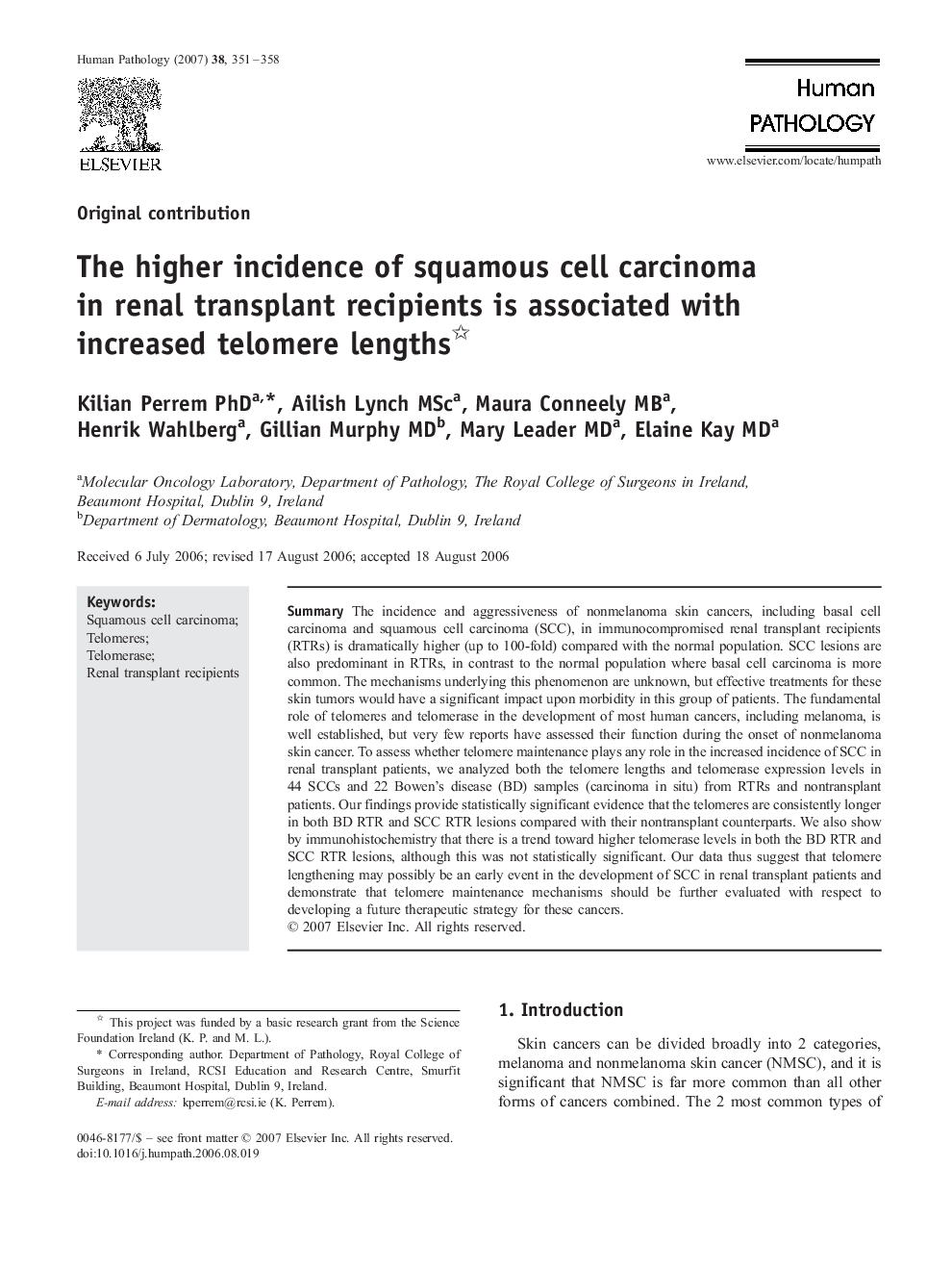| Article ID | Journal | Published Year | Pages | File Type |
|---|---|---|---|---|
| 4134862 | Human Pathology | 2007 | 8 Pages |
Abstract
The incidence and aggressiveness of nonmelanoma skin cancers, including basal cell carcinoma and squamous cell carcinoma (SCC), in immunocompromised renal transplant recipients (RTRs) is dramatically higher (up to 100-fold) compared with the normal population. SCC lesions are also predominant in RTRs, in contrast to the normal population where basal cell carcinoma is more common. The mechanisms underlying this phenomenon are unknown, but effective treatments for these skin tumors would have a significant impact upon morbidity in this group of patients. The fundamental role of telomeres and telomerase in the development of most human cancers, including melanoma, is well established, but very few reports have assessed their function during the onset of nonmelanoma skin cancer. To assess whether telomere maintenance plays any role in the increased incidence of SCC in renal transplant patients, we analyzed both the telomere lengths and telomerase expression levels in 44 SCCs and 22 Bowen's disease (BD) samples (carcinoma in situ) from RTRs and nontransplant patients. Our findings provide statistically significant evidence that the telomeres are consistently longer in both BD RTR and SCC RTR lesions compared with their nontransplant counterparts. We also show by immunohistochemistry that there is a trend toward higher telomerase levels in both the BD RTR and SCC RTR lesions, although this was not statistically significant. Our data thus suggest that telomere lengthening may possibly be an early event in the development of SCC in renal transplant patients and demonstrate that telomere maintenance mechanisms should be further evaluated with respect to developing a future therapeutic strategy for these cancers.
Related Topics
Health Sciences
Medicine and Dentistry
Pathology and Medical Technology
Authors
Kilian PhD, Ailish MSc, Maura MB, Henrik Wahlberg, Gillian MD, Mary MD, Elaine MD,
